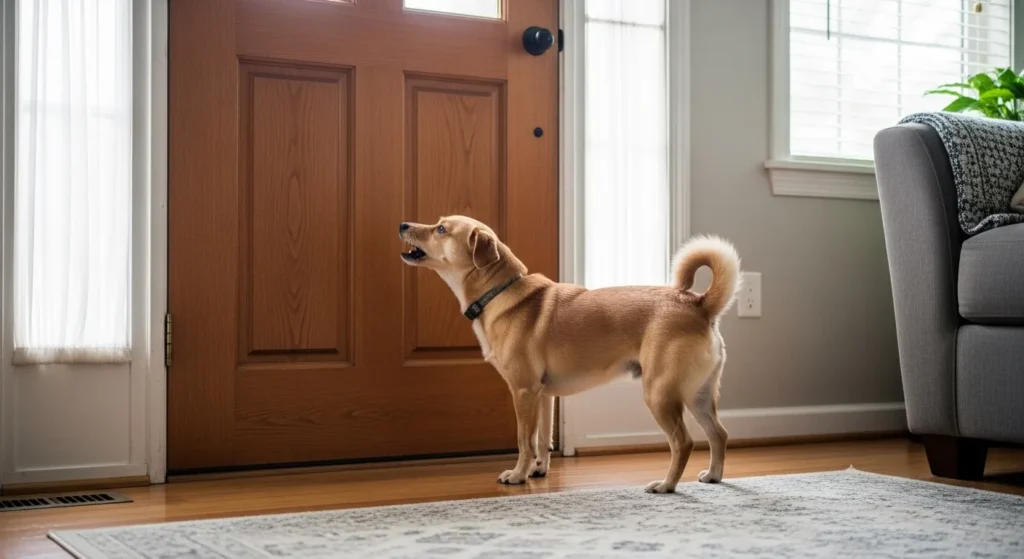Barking is a natural way for dogs to communicate. But excessive barking can frustrate pet owners and neighbors. This guide explains why dogs bark and offers practical, vet-approved tips to reduce it. You’ll find clear steps to manage barking while keeping your dog happy and healthy.
Why Do Dogs Bark?
Dogs bark for many reasons. Understanding the cause is the first step to addressing it. Here are common reasons dogs bark:
- Alert Barking: Dogs bark to warn you about people, animals, or noises. For example, they may bark at a delivery person.
- Attention-Seeking: Dogs bark to get food, playtime, or your attention.
- Boredom: A lack of exercise or mental stimulation can lead to barking.
- Fear or Anxiety: Dogs may bark at strangers, loud noises, or when left alone.
- Territorial Barking: Dogs bark to protect their space from perceived threats.
- Greeting Barking: Some dogs bark excitedly to say hello.
- Compulsive Barking: Repetitive barking may signal a behavioral issue.
Knowing why your dog barks helps you choose the right approach. For example, a bored dog needs more activity, while an anxious dog may need training or professional help. Check your dog’s health with our Pet Symptom Checker to rule out medical issues like hearing loss that could cause barking.

How to Stop a Dog from Barking: Practical Tips
Reducing barking takes time and patience. Avoid yelling or punishing your dog, as this can increase anxiety and worsen the behavior. Instead, use positive reinforcement and these vet-approved strategies.
1. Identify and Remove Triggers
Find what sets off your dog’s barking. If they bark at people passing by, block their view.
- Close curtains or blinds to limit visibility.
- Use privacy film on windows for a simple fix.
- Move your dog to a quieter room during high-traffic times.
For dogs barking at noises, try a white noise machine or soft music to mask sounds. This works well for noise-sensitive dogs, like those startled by fireworks.

2. Use Positive Reinforcement Training
Positive reinforcement rewards your dog for quiet behavior. Here’s how to teach the “quiet” command:
- When your dog barks, say “quiet” in a calm voice.
- Wait for them to stop barking, even for a moment.
- Reward them with a small treat, like a piece of chicken or cheese.
- Gradually increase the time they must stay quiet before getting a treat.
For example, if your dog barks at the doorbell, wait for three seconds of silence, then reward them. Over time, they’ll learn that staying quiet brings rewards.
If your dog barks for attention, ignore them until they’re quiet. Then reward them with praise or play. This teaches them that barking doesn’t work, but silence does. Learn more about positive training in our How to House Train Your Dog guide.
3. Provide Enough Exercise and Mental Stimulation
A tired dog barks less. Ensure your dog gets enough physical and mental activity daily.
- Take your dog for walks or runs based on their breed and age.
- Play games like fetch or tug-of-war.
- Use puzzle toys or food-dispensing toys to keep their mind busy.
For example, a high-energy breed like a Border Collie may need an hour of exercise daily, while a smaller dog may need less. Check our Pet Breed Finder Quiz to learn about your dog’s needs.
4. Teach Alternative Behaviors
Teach your dog a behavior that’s incompatible with barking. For example:
- Go to Bed: Train your dog to go to a mat or bed when someone knocks. Reward them for staying there quietly.
- Fetch a Toy: If your dog barks at the doorbell, teach them to grab a toy instead. They can’t bark with a toy in their mouth.
Start training in a calm setting without triggers. Gradually add distractions, like a doorbell sound, and reward calm behavior.
5. Manage Territorial Barking
Territorial barking happens when dogs feel their space is threatened. To reduce it:
- Block access to windows or fences where they see passersby.
- Use a crate in the car to limit their view during drives.
- Socialize your dog with people and other dogs to reduce fear-based barking.
For example, let your dog meet the mail carrier and reward calm behavior with treats. This builds positive associations. If you’re introducing a new pet, try our Pet Compatibility Checker for tips.
6. Address Separation Anxiety
Dogs with separation anxiety may bark when left alone. Signs include destructive behavior or excessive barking when you’re gone. To help:
- Leave toys or puzzle feeders to keep them occupied.
- Practice short absences to build their confidence.
- Consult a vet or behaviorist for severe cases.
Learn more about pet behavior in our DCM in Dogs: Dilated Cardiomyopathy Guide.
7. Avoid Harmful Tools
Avoid using shock collars or debarking surgery. These can cause pain and stress, worsening behavior. Instead, focus on humane methods like training and environmental changes. Vibrating collars may be a gentler option, but use them with positive reinforcement and consult a trainer.
When to Seek Professional Help
If barking persists despite your efforts, consult a professional. Contact a Certified Applied Animal Behaviorist, veterinary behaviorist, or certified dog trainer. They can assess your dog’s behavior and create a tailored plan. Health issues like hearing loss or anxiety may also contribute, so visit a vet. Use our Pet Symptom Checker to monitor your dog’s health.
Common Questions About Dog Barking
Here are answers to questions from Google’s “People Also Ask” section:
- How do I stop my dog from barking at night? Ensure they’re tired before bed with exercise. Use a white noise machine to block sounds. Check for anxiety or health issues.
- Why does my dog bark at strangers? This could be fear, territorial instincts, or excitement. Socialize them gradually and reward calm behavior.
- Can I train my dog to bark less? Yes, with consistent training like the “quiet” command and removing triggers.
- What if my neighbor’s dog barks excessively? Talk to the owner politely. If it continues, document the barking and contact local authorities.
For more pet care tips, see our Why Does My Dog Follow Me Everywhere? post.
Legal Considerations for Barking Dogs
Excessive barking can lead to complaints. In the U.S., barking laws vary by state. For example:
- California: Barking for 30 minutes or more may be a nuisance in some areas.
- Alaska: Dogs can bark for 5 minutes before it’s considered excessive.
- Alabama: No specific time limit, but you must provide evidence for complaints.
Check local laws and talk to neighbors before escalating issues. Keeping your dog calm helps avoid fines or disputes.
Final Thoughts
Stopping excessive barking requires patience and understanding. Identify why your dog barks, use positive reinforcement, and provide enough exercise. Avoid harsh methods that could harm your dog. With consistent training, you can reduce barking and create a peaceful home. For more pet care advice, try our Pet Name Generator or Pet Food Safety Checker to keep your dog happy and healthy.
